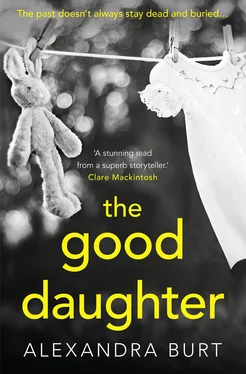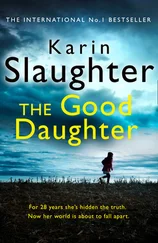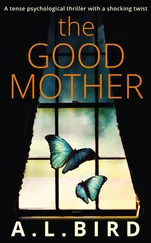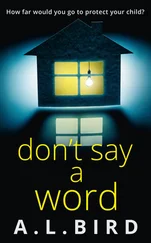“No, nothing happened.” I don’t know how to ask the questions that bounce around all day long in my head.
“I’m in your neighborhood. I can come by.”
Fifteen minutes later we are in the very house and on the very couch where we used to sit together as teenagers.
“I can’t believe no one knows who she is. Someone must miss her. Is there anything you can tell me? The hospital won’t talk to me.”
“They expect her to wake up from the coma and tell them who she is. Who did this to her.”
“How do they know she’ll wake up and be okay?”
“They don’t know. They’ve done tests but they won’t know for sure until she wakes up. But we know she’s not matching up to anyone reported missing.”
“Why don’t they make her picture public? Someone might recognize her.”
“She’s got a tube in her mouth, her face is swollen—I’m not sure that would do any good. I’ve seen people after car accidents, or fights, and they are so swollen not even their own family recognize them.”
“You’ve seen her lately?”
Bobby pauses, ever so slightly, then takes a sharp breath in. “No, not really. Detectives are working on the case and I don’t really know any more than you do.”
“Are there others?”
“Other what?”
“Missing women. In Aurora.” There is a hint of a shadow descending over his face. His cheeks become stiff, no longer a friend sitting here, catching up, but a door just closed, like the gates of a fortress. “What if there were other victims, in the past? How can you explain the way he buried her? What if he was right there, watching me? What if I interrupted something and he knows who I am?”
“Dahlia—”
“There must be others. What he did to her, that’s not something that someone does once. There’s someone out there, maybe, I don’t know. Really, I don’t. But it’s not impossible. You can’t say it’s impossible.”
“You’re going overboard. I—”
“Bobby, what if there are more missing women? And no one does anything about it.”
“You need to stop worrying. There’s no reason to believe that he was watching you. How do you—”
“Are there others?”
“Dahlia—”
“Missing women. Cases like this. As a cop you should know if there’ve been any cases in the past ten years or so.”
His expression goes blank. I know the face, have seen it before. We used to get into a lot of trouble, back in high school. We smoked behind the gym, broke some equipment in the chemistry lab, but Bobby—the most honest person I know—changes when he lies. His face turns indecipherable with no signs of life. Your facial expressions give it away. Learn to have a poker face , he used to say to me.
“She’ll wake up. It’s only a matter of time.”
“So there are others?”
“Just allow it to play out for now. I think she’ll wake up and then we’ll know what happened. In the meantime, try not to worry. You saved her life. Isn’t that enough?”
His radio goes off, the voice of a female dispatcher squawking, just a couple of words at most, clipped, short. Bobby gets up and walks off to the side, pushing radio buttons, talking into his shoulder mic. “Let’s talk some other time,” he says and ends our conversation.
After he leaves, I go back to skimming through the articles. When I run across something with additional information, I hit the print button—I can’t stand reading on a computer screen—and finally I pull up the FBI site, which lists the missing by state.
I’m just about to compare online photos of missing girls with any resemblance to my Jane when I remember my mother and her lost purse. Lately, forgotten tasks enter my mind in completely unrelated moments, like an air-filled float popping to the surface of the ocean. The purse had completely slipped my mind, yet here it is, urging me to go find it. It’s too late to go out and search for it now; it’s about to get dark.
The composite woman pops back into my head, and the report on TV I watched that day in the hospital. I do a search for her and come across an article.
I see a red blinking light coming from the printer on the kitchen counter. I reload the tray and wait for the last few pages to print. I grab the stack and sit on the couch in the dining room and I start reading.
Last week, a jogger found a young woman on the brink of death in the woods of Aurora, Texas. The very discovery has stirred up a cold case of another alleged missing person that began with a man appearing at the Aurora police station over thirty years ago. The headline in the 1985 Aurora Daily Herald read as follows:
Man booked for resisting arrest after reporting disappearance of a woman
Aurora, December 12, 1985
A man by the name of Delbert Humphrey appeared at the Aurora police station claiming his girlfriend, a woman known to him only as “Tee,” had gone missing after he looked for the woman at the Creel Hollow Farm in Aurora. Two deputies questioned Humphrey extensively but even the police chief, Griffin Haynes, was unable to make sense of his story. Questioned further, Humphrey admitted he was not licensed to drive a vehicle and he was also unable to produce a photograph of the missing woman. He did, however, offer a pencil drawing of her. When the police doubted his story, he insisted on a sketch artist. A composite was rendered of the mystery woman.
The deputies asked permission to search his vehicle. During the search, they recovered what looked like drugs, commonly referred to as rock cocaine or crack. The rocklike substance, however, had a strong fragrant odor. Upon questioning, Humphrey referred to it as “High John the Conqueror Root” and “Balm of Gilead.” Humphrey explained that the missing woman was part of a group of travelers working at local carnivals, reading palms and selling herb and plant resins, the very rocks deputies thought to be rock cocaine.
The deputies also recovered an old rudimentary brass scale and weights. Humphrey was booked for driving without a license, on suspicion of possession with intent to distribute an imitation controlled dangerous substance and possession of drug paraphernalia.
The young woman who was found by a local jogger in the woods, which locals refer to as the Whispering Woods, is on the mend, however. It’s been over a week but police are confident that her identity will be revealed as soon as they are able to question her.
At the end of the article is a rudimentary pencil drawing of the woman who went missing in 1985. Her individual features are flat, barely dimensional. The composite, however, shows more depth and dimension. She seems to be a woman in her twenties, long hair parted in the middle, full lips.
When I emerge from the stack of papers, it’s dark outside and the cold air coming in through the open sliding glass door makes me shiver. I sit on the floor and fan out the papers on the coffee table. There are Jane’s articles, and the woman whose only likeness is a composite.
When I run out of room on the coffee table, I arrange the papers on the floor. I get lost in sorting them and realize no one cares about Jane as much as I do. They can’t possibly know what I have come to realize the day I snuck into her room; how I saw and felt that she wanted to communicate with me. And that she holds the key to her very own identity and she wanted to tell me. How else can I explain what happened at that moment, the whiff of cinnamon, my mind slipping, feeling as if I’m tumbling down a staircase, the tremor going through my body? How can I explain what I saw that night? The vision of the woods. It can’t be nothing, I’m sure of that.
The printer behind me feeds more paper and I grab the last of that stack once the motor goes quiet. The mystery woman without a photograph was a rather big story—even papers of surrounding counties had picked it up. The articles revolved more around the man going to jail for the possession of an antique scale and some resin than the fact that he was there to report a missing person.
Читать дальше












